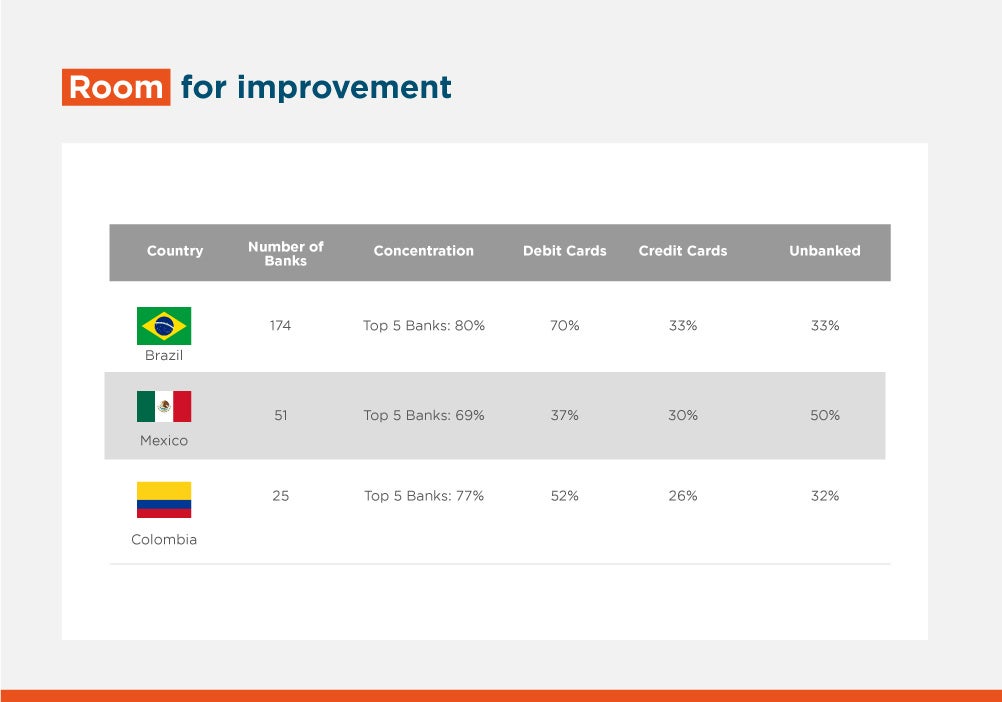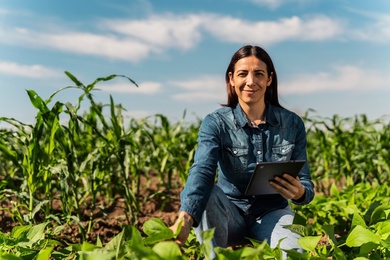Open Banking in Latin America & the Caribbean: Here & Now

In 2009, Federal Reserve Chairman Paul Volker provokingly said: “The only thing useful banks have invented in 20 years is the ATM”. Since then, innovation has been rampant across the sector. Top of the list is Open Banking, which has the potential to radically transform finance.
Open Banking is a new model of collaboration between financial institutions (FIs) and third-party providers of financial solutions. Historically, banks had an exclusive relationship with their customers, and client data was kept strictly within such institutions. Now, the possibility for clients to share their data is creating huge opportunities.
Motivated by the increased need to attend to customer demands and compete with new financial players, banks are adopting business models based on application programming interfaces (API). API allows applications and software languages to talk to each other. In practice, a consumer will be able to access several financial products, at better fares, offered by different providers, from one app. By sharing data, banks can expand customer reach, accelerate the adoption of new technologies, and create new revenue streams.
A global phenomenon
Regulators, often driven by financial inclusion mandates, are promoting open ecosystems through directives like PSD2 in Europe and the Open Banking Standard in the UK. In the US and China, it is market forces (rather than regulators) driving collaboration with fintechs. Countries in Latin America and the Caribbean (LAC) are moving towards data-sharing frameworks but at different speeds. While Argentina, Chile, and Peru are still in the early stages, Brazil is leading the race, followed by Mexico.
In Brazil, many FIs, eager to seize Open Banking‘s benefits, are getting ahead of the regulator’s requirements. Beyond compliance, they plan to open APIs related to account information, account opening, rewards, FX transactions, among others. Evidence of Brazil’s efforts to encourage innovation is the regulator’s launch of PIX, a system for instant payments and next generation of digital wallets with interoperable QR Codes.
Mexico, however, was the first country to have a regulation for Open Banking. The Fintech Law of 2018 (prepared with IDB’s help), enforces over 2,300 entities to share data. In 2021, API specifications on aggregate and transactional data are expected.
Meanwhile, COVID-19 has accelerated the demand for innovation by banks, and led to the questioning of the branch banking model. The supply of innovative solutions is fueled by a robust fintech ecosystem: fintechs in LAC attracted US$1.2 billion of venture capital in the first quarter of 2021 alone. And the number of fintechs now totals a whopping 2,300, as per the latest report to be published by IDB with the collaboration of Finnovista.

From Open Banking and Open Finance… “In the future, every company can be a fintech”
The name of the game is now “collaboration”. This is happening across the whole spectrum of financial solutions, from payments, loans, and investments, to insurance. This paradigm change is luring new players who can embed financial solutions into their own business models.
Banking-as-a-Service, which goes beyond the data sharing contemplated in Open Banking, including products such as infrastructure and data, allows non-financial applications to embed financial services. According to Business Insider, embedded finance (or “Open Finance”) will represent a global market of US$7.2 trillion.
LAC is not on the sidelines. Rappi, the first Colombian unicorn, is a perfect example of Open Finance. The delivery app has thousands of supermarkets, restaurants, pharmacies, and liquor stores within its ecosystem. Behind the scenes are FIs that enable the financial services provided through the app. It’s the same with Kavak, the first Mexican unicorn. On a single website and with just a few clicks, its clients can choose their car, apply for a loan and receive approval on the same day.
Ultimately, data sharing translates into value added for consumers, for startups, for regulators who want to expand financial inclusion, and why not, for banks too. Risks can be high for those traditional FIs which are slow to adapt. But many banks will thrive by winning customers by being trusted “curators” for the best and most innovative solutions available in their markets, and not necessarily solutions developed inhouse.
How can Open Banking be democratized…?
Many FIs struggle with breaking away from legacy monolith applications. They need to efficiently integrate cloud services and migrate from capex-intensive models to a tech infrastructure built on open source and opex. Digital platforms are facilitating this transition, and so are development banks!
US-based Plaid developed technical infrastructure APIs that connect consumers, traditional FIs, and developers. Interestingly, IDB Lab portfolio company FinConecta provides similar solutions across LAC. Together with Amazon Web Services, FinConecta launched a leading-edge API platform that brings together banks, payment processors, insurance companies and other market participants, through one single integration.
With a view to promoting inclusion and innovation, IDB Group continues supporting the ecosystem through FintechLAC. This regional initiative is the first Public-Private group of its kind. It groups regulators, supervisors, and fintech associations from 16 countries. Its goal is to develop, consolidate and integrate LAC’s fintech ecosystem through the promotion of policies and regulations, added to institutional strengthening of ecosystem actors. Presently, FintechLAC is supporting Chile in the creation of Open Finance-based regulations, and financing the efforts of Pacific Alliance countries in understanding regulatory and financial system gaps.
Conclusion
LAC is the region that has most harshly been affected by the pandemic. Concurrently, the fintech sector is thriving, while the “API economy” is opening new horizons for all types of players to collaborate and co-create, benefiting from market adoption and regulator-promoted innovative and inclusive solutions and business models. State-of-the-art API-enabled platforms are simplifying and accelerating Open Banking and digital transformation. Clearly, a lot is happening since banks invented ATMs!
LIKE WHAT YOU JUST READ?
Subscribe to our mailing list to stay informed on the latest IDB Invest news, blog posts, upcoming events, and to learn more about specific areas of interest.
Subscribe



